An axe sharpener is one of the tools you cannot afford to get wrong, especially if you want to improve the efficiency of your axe.
Also, working with a blunt axe means you’re likely to expend a lot of unnecessary energy, which you can avoid by investing in a good sharpener.
In our presentation today, we’ll explicitly elaborate on the best axe sharpener and the respective features that make them outstanding. So without further ado, let’s delve right into it!
Different Types Of Axe Sharpeners

Sharpening an axe.
Primarily, you can use three main kinds of axe sharpeners for a sharpening job. These are as follows:
- Stone sharpener
- Electric sharpener
- File sharpener
Stone Sharpener
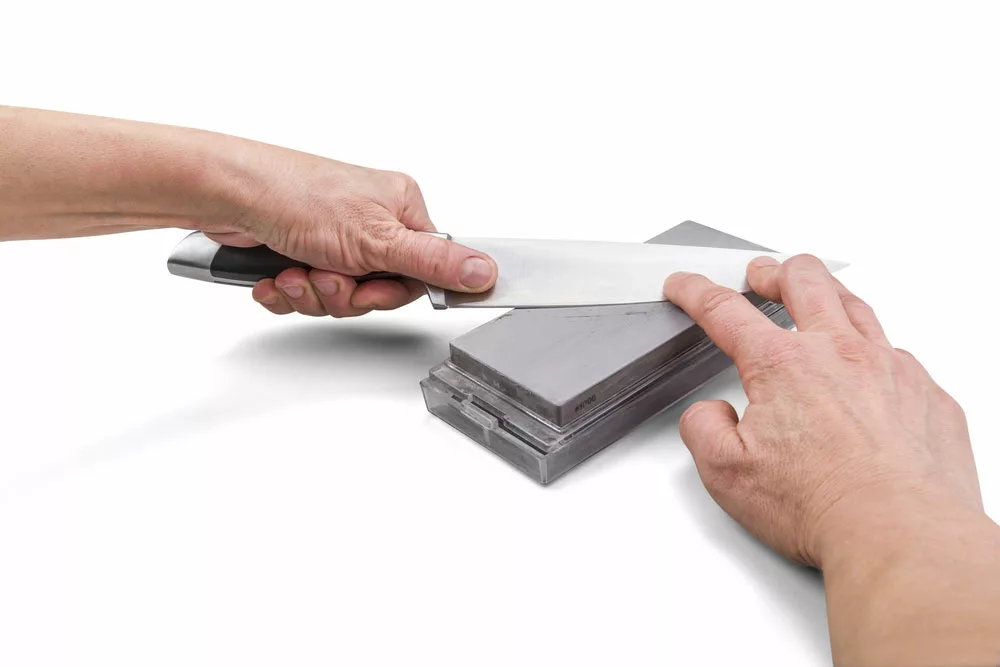
Sharpening a knife on a stone sharpener.
Whetstones are arguably one of the oldest forms of axe and knife-sharpening tools.
Primarily, they are versatile as they can effectively sharpen an axe with any edge.
Nonetheless, there exist different sharpening pucks. So you have to choose the kind that best suits your axe depending on its condition and shape.
Let’s check out these respective types and the axe they are best at sharpening.
Less than 1000 Grit
They feature a course surface and are best suited for axes in appalling conditions. So you can use them if your axe is rusty or has large dents.
Between 1000 to 3000 Grit
They are finer (in regards to structure) than the type above. Hence, they are best fit for axes with dull edges.
Between 4000 to 8000 Grit
These should be your go-to stone sharpeners if you have already sharpened your axe and need to smoothen its edges.
They are ideal for refining sharpened edges; some refer to them as finishing stones.
Note that you can create a simple DIY axe sharpening stone from river stones. Other stone types that befit this innovative Wheatstone include the following:
It’s also imperative to use some water or, if available, honing oil when sharpening your axe on any of the above stones.
Electric Sharpener
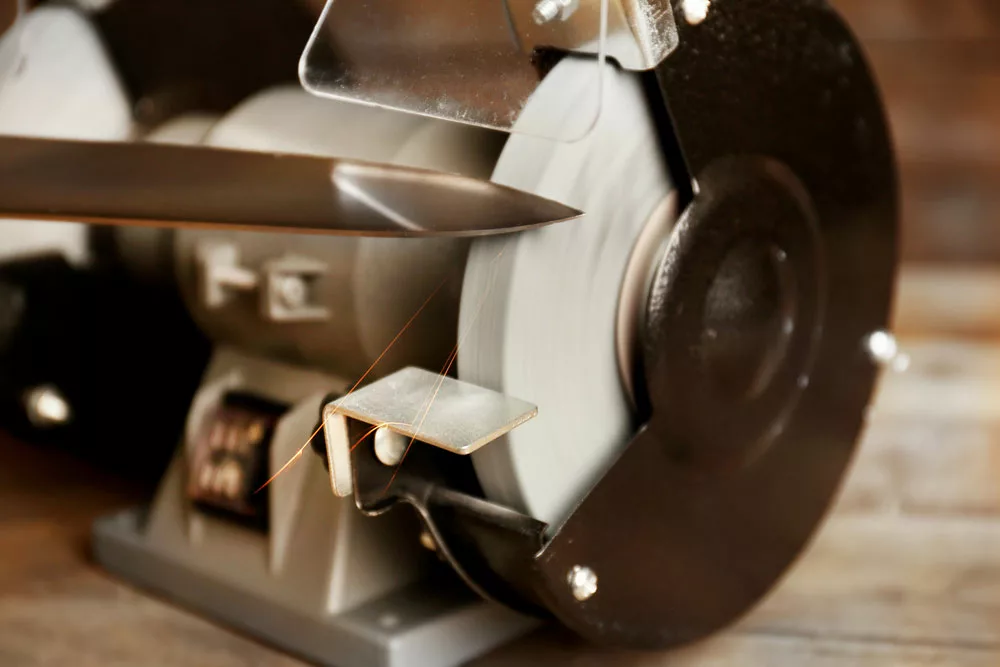
Sharpening a knife with an electric sharpener.
It’s the ideal sharpening option when you have access to electricity. There are many types of electric sharpeners, including:
- A Dremel tool
- Belt sander
- Bench grinder
Also, there are three major types of grains when dealing with electric sharpeners.
- If you are dealing with a rusty and dilapidated axe edge, go for the coarse grain sharpener of sizes 120 to 200.
- Next, if you intend to sharpen an axe with a dull edge, a sharpener with grains of between 1000 and 3000 is ideal.
- Lastly, if you’re refining your axe edge after sharpening it, go for grain sizes above 3000.
One cardinal advantage of such sharpeners is that they allow you to adjust the axe angle.
They are also relatively quicker than any other axe-sharpening technique. However, you risk oversharpening one side of the edge, especially if you’re not experienced using them.
File Sharpener
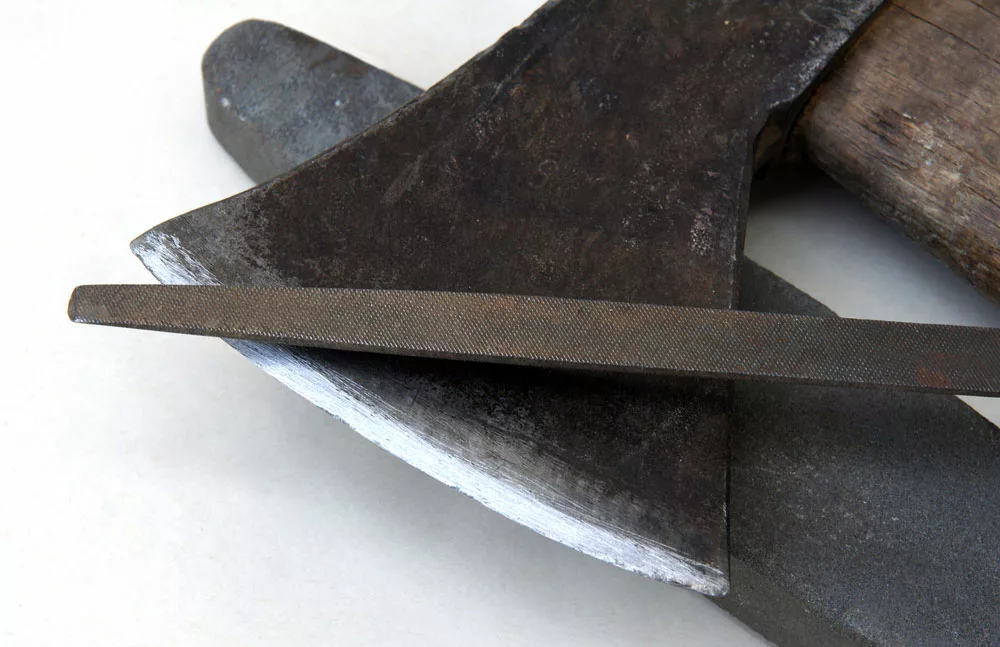
A file sharpener and an axe.
Most sharpening files feature a thin profile. Also, the large part of the tool features a set of closely packed teeth while there’s a handle on the other end.
A file sharpener is ideal for sharpening a wide range of axe types and conditions, so it’s a versatile tool.
Also, you’ll often find that one side of the file sharpener has a fine set of teeth while those on the other side are coarse.
Noteworthy, when sharpening with a file, you need to hold its handle next to your body and sharpen by extending the tool away (off the body).
Moreover, a mill bastard file is the best type especially if you primarily intend to use the tool to sharpen your axes.
Best Axe Sharpener
1. Lansky Puck
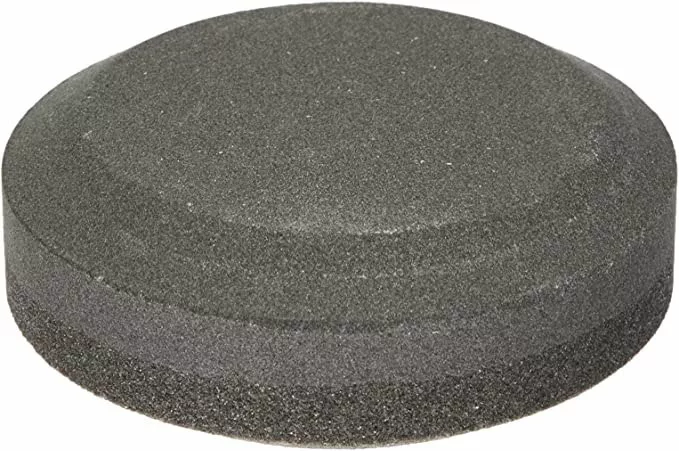
Advantages and Disadvantages
- It’s a versatile sharpening stone you can use from anywhere (even in the field).
- Also, it works excellently for all sorts of axe edges.
- It’s lightweight, so you can easily carry it around wherever.
- Moreover, you can use it with or without honing oil but for the best experience, it’s best to use it with a lubricant.
- The only reservation about the puck is that it may not be suitable for sharpening big-sized axes.
- Also, being a small tool, your hand may not be safe if it slips off when sharpening with the device.
2. Crescent Nicholson 8″ Rectangular Double/Single Cut Axe File

Advantages and Disadvantages
- It features single-cut and double-cut sides, making it a versatile sharpening file.
- The file measures 0.25 Inches in height and 8 inches in length (including the file handle). Thus you can conveniently stack it in your backpack when traveling.
- Also, the file’s rectangular shape optimizes the filing experience as it has a relatively broad surface area for maximum contact with the axe.
- Again, it is safe for use even in a restricted space without damaging the tool.
- Lastly, the tool doesn’t sharpen as fast as you’d expect with an electric sharpener.
3. Dremel 3000-2/28 Variable Speed Rotary Tool Kit
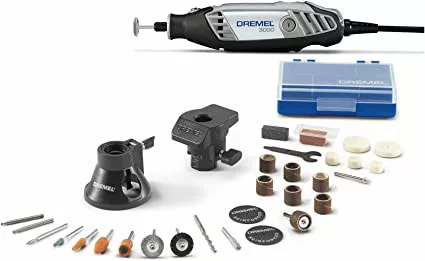
Advantages and Disadvantages
- It’s a versatile tool for many DIY projects, including sharpening, engraving, sanding, and polishing metal surfaces.
- The tool comes with a plastic package to facilitate easy storage.
- It has a relatively slim profile and a padded handle to optimize comfort during long hours of use.
- Further, it features a mechanism for cooling via an innovative airflow system.
- Again, you can set up the tool at speeds between 5,000 and 35,000 RPM. It is ideal as it enables precise control of the rotatory device.
- Also, the tool has a top rating regarding value for money.
- The primary downside is that you must have an electricity supply to use it.
- Also, it would help if you were well-trained (experienced) to use the Dremel tool. Otherwise, you might hurt yourself.
4. DEWALT Bench Grinder, 8-Inch (DW758)
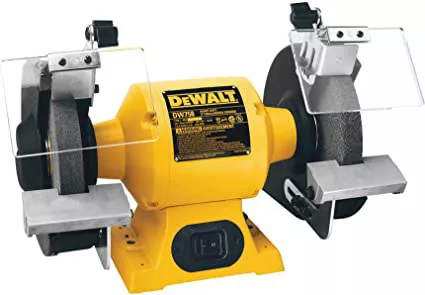
Advantages and Disadvantages
- It features a ¾ horsepower induction motor, ideal for various applications.
- The tool also has optimized durability thanks to its rugged cast iron base.
- Thirdly, the bench grinder has excellently working rear exhaust ports while its motor operates at a top speed of 3,600 rpm.
- However, if an inexperienced user is operating the tool, they may oversharpen one axe’s edge.
- It’s also more pricey than other options with similar features, but this tool is more durable, hence worth the investment.
5. Fallkniven DC4
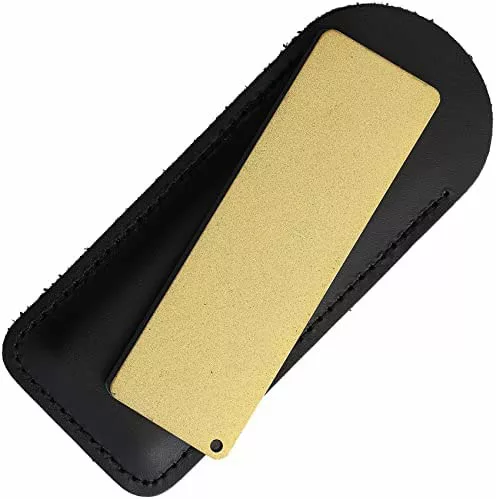
Advantages and Disadvantages
- It features a coarse diamond edge with a grit rating of 800, while the other is a fine ceramic edge with a 2000 rating.
- Again, the whetstone has a thin profile, is compact, and comes with a leather pouch to facilitate easy carrying.
- It’s also lightweight, weighing just 65 grams, and convenient to carry.
- Also, you don’t need water or sharpening oil to use it. It is ideal for use anywhere (even without access to the two lubricants).
- Nonetheless, it has a relatively small surface area, especially if you’re looking to sharpen a broad-edged axe or knife.
Steps To Take Before Sharpening Your Axe
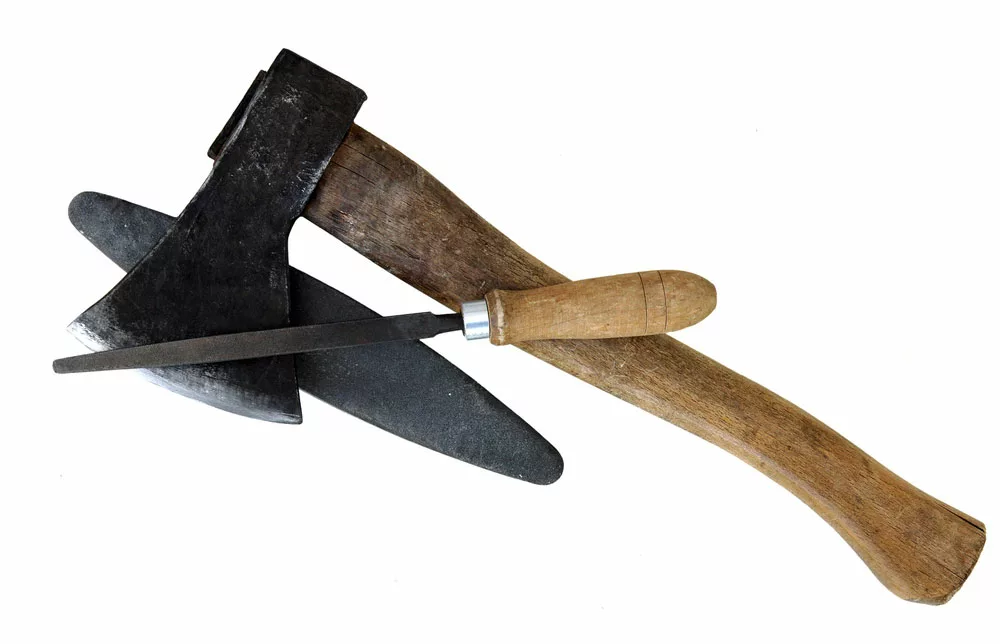
An axe with sharpening tools.
- First, ensure that you have restrained your axe so it won’t slip off during sharpening.
- Next, clean all the dirt and grime from the axe and pay special attention to the axehead. You can use steel wool or white vinegar for the cleaning job.
Once your axe is securely held and clean, you can start sharpening it.
Conclusion
Ax sharpening is seamless, especially if you have the right tools. Above, we have highlighted the top axe sharpening tools needed to keep your axe in good shape.
If you cannot find any of them, worry not.
You can improvise with available materials such as river stones and sandstones. For more, you can always reach out to us.
